Dhrupad
Dhrupad
is the oldest surviving classical style of Hindustani
(or North Indian) vocal music. Its name is
derived from dhruva-pada, simply meaning "refrain," and today denotes
both a form of poetry and a style of music in which the poetry is sung. Dhrupad
music traditionally has three major parts - alap, jor-jhala,
and composition. A dhrupad is introduced by a slow tempo-ed, rather
somber and controlled,
recurrent set of syllables (non-words) known as an alap. The singer
attempts to emphasize the purity and clarity of each note, with perfect
pitch. It can last up to an
hour before the melody begins. An example of an alap set pattern
is: a re ne na, té te re ne na, ri re re ne na, te ne toom ne (this last
group is used in cadences to reach the tonic or the end of a long phrase).
It is the elaborate alap,
without drum accompaniment and gradually developing into an accelerating rhythmic
pulse, that sets this genre apart from other Indian styles. The
alap is followed by the jor, a raga the develops a steady beat
which is non-cyclical, and then continues into a faster paced jhala.
The song concludes with the Dhrupad composition, usually is set in chau
taal (12 beat cycles), sul tall (10 beat cycles) triva taal
(7 beat cycles) or dhamar (14 beat cycles).
Like all classical
Indian vocal music, Dhrupad is monophonic and modal, with a single
melodic line and no harmonic parts. The modes are called raga, and
each raga is a complicated framework of melodic rules.
Dhrupad are performed by a solo
singer, or a small number of singers in unison, to the beat of a barrel drum,
the mridangam or pakhawaj, and can be accompanied by a sitar.
The songs are highly devotional, and are mostly in praise of Hindu deities.
The origins of
Indian classical music can be found from the oldest of scriptures, the Vedas.
Samaveda, one of the four Vedas, describes the role and importance
of music at some length. Dhrupad and other Indian classical music styles
have been used a meditative tool for attaining self realization. All the different
forms of these melodies, the ragas, are believed to affect the various
"chakras" (energy centers or "moods") of a person.
|
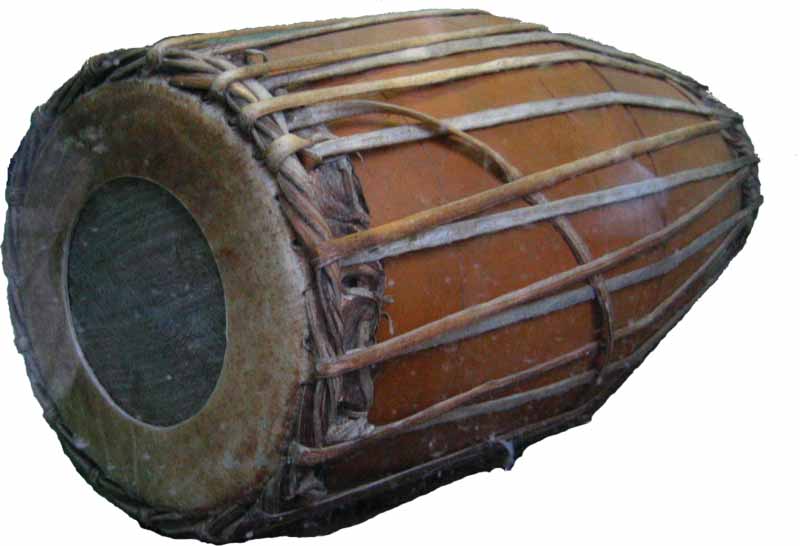
|
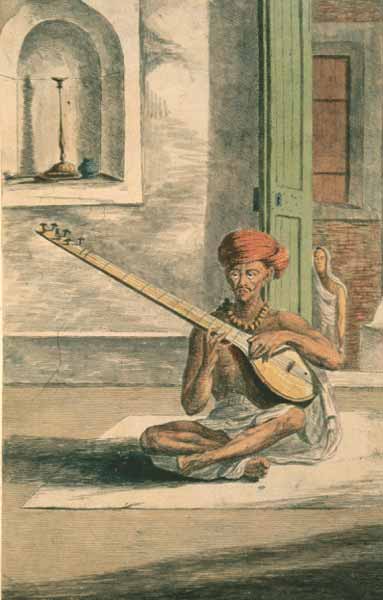 |
|
In ancient Hindu sculpture, painting, and mythology,
the mridangam is often depicted as the instrument of choice for a
number of deities including Ganesha and Nandi, who is the vehicle and
companion of Lord Shiva. |
An etching of an Indian man playing a sitar,
18th century.
|
An example of a three-part traditional Dhrupad song - sung by Wasifuddin Dagar
Raga
Chandrakauns (Alap) - (33 min.)
Raga
Chandrakauns (Jor-Jhalla) - (8 min.)
Dhrupad
in Chautaal (12 beats) - (13 min.)
from Dhrupad (2005)
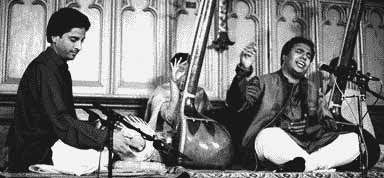 |
|
Washifuddin Dagar with Ensemble.
|
with some contemporary variations on the theme:
Om Namah Shivay
- sung by Veena Sahasrabuddhe (8 min.)
Dev Bade Data
- sung by Veena Sahasrabuddhe (8 min.)
Shankar
Panch Vadan - sung by Umakant and Ramakant Gundecha (7 min.)
Jai Shiva
Shankar - sung by Rajan and Sajan Mishra (8 min.)
from Best of Shiva Bhajans (1992)
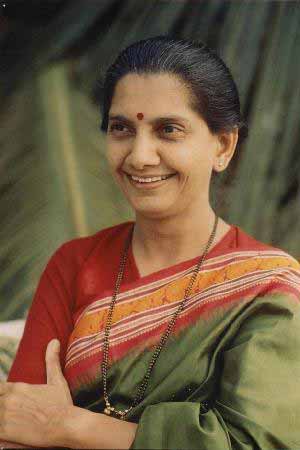 |
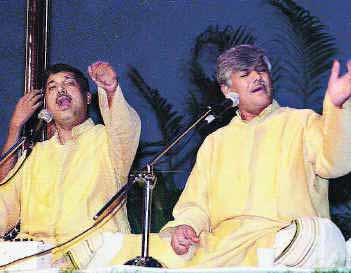 |
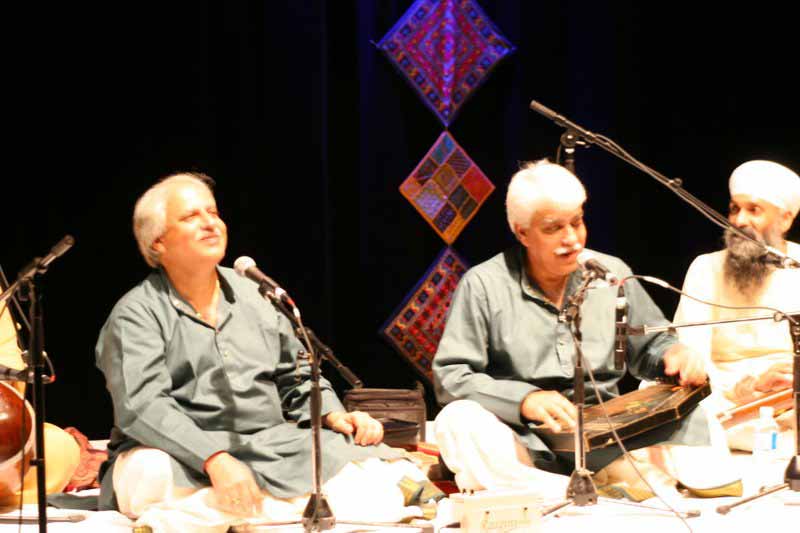 |
|
Veena Sahasrabuddhe |
Umakant and Ramakant Gundecha |
Rajan and Sajan Mishra |
|
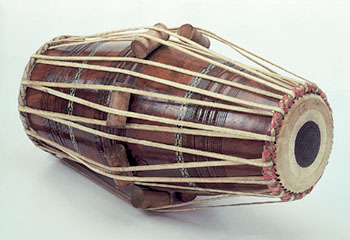
|
|
The
pakhawaj
|
some of the source information is from: http://en.wikipedia.org/wiki/Dhrupad
and http://www.dagar.org
return to schedule






